Stove-fireplace in the interior of a country house
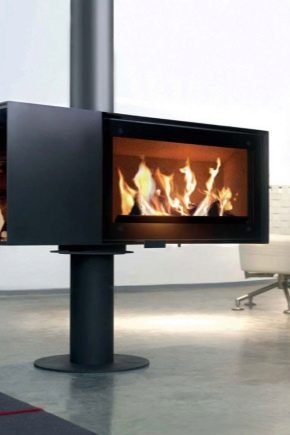
Old-style stoves are gradually giving way to more decorative fireplaces. During the long and cold winters, stoves were the only means of heating in the house, but with the advent of central and gas heating, the need for this bulky building disappeared.
The fireplace has become an aesthetic additional heating device on cool summer or autumn evenings in a country house. Soft warmth, bright reflections of a flame and unhurried conversation make a person happier. The advent of industrial designs of fireplace stoves made this luxury available both in a city cottage and in a summer cottage. A large selection of different models allows you to choose exactly the model that suits the design and functional qualities for a particular consumer.
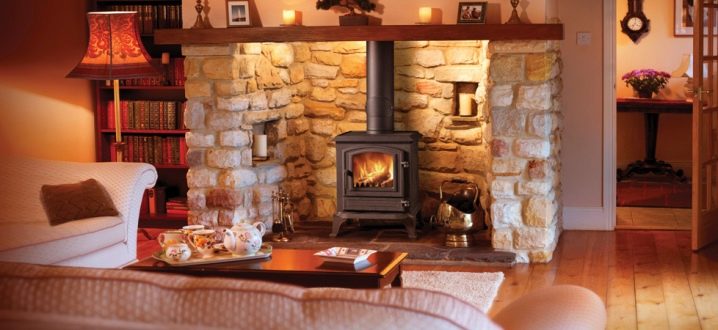
Peculiarities
The main difference between a fireplace and a stove is the time it takes to heat the room and the time it takes to preserve heat. The stove has a brick chimney system. The brick, when heated, begins to warm the air and retains heat for a long time.
An open fire in a traditional fireplace will heat up the air quickly, but the heat is kept only during the furnace, since there is no heat-saving material - heated brick or stone. Therefore, it must be borne in mind that it is possible to use fireplaces with an open hearth for a country house for the purpose of constant heat supply only with the installation of special elements for heat accumulation. Fireplace stoves have become an effective solution; they have a closed structural system with increased heat transfer and high decorative qualities due to heat-resistant glass that opens a view of the blazing fire.
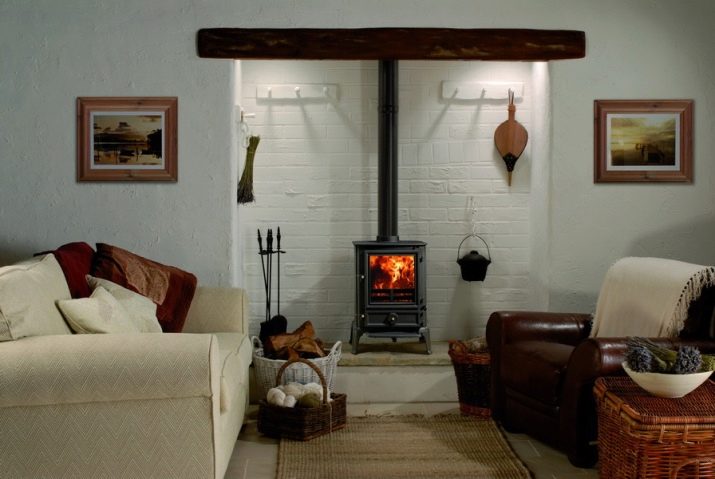
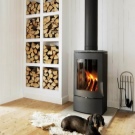
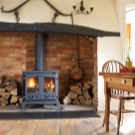
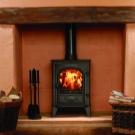
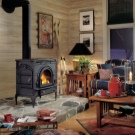

Fireplaces differ according to the type of fuel used: wood, electric, gas, liquid fuel. You can choose a suitable model depending on the conditions of use. Wood-burning models have the highest heat transfer coefficient, but you always need to have a supply of logs, their consumption is large enough, not every summer cottage owner can ensure the regular purchase and delivery of firewood. Gas fireplaces give no less heat, but they require special equipment and gas communications. The familiar electric fireplaces are the most expensive type of heating due to the cost of electricity. The last to appear on the market is a liquid fuel - ethanol.
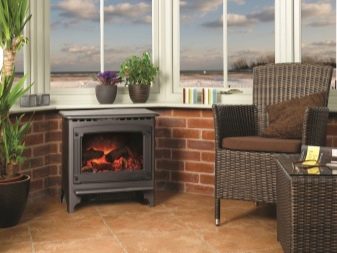
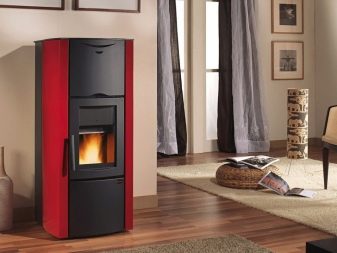
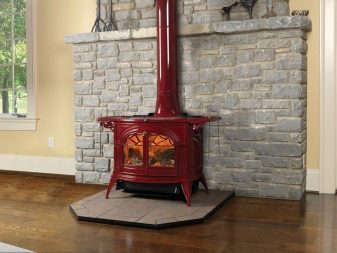
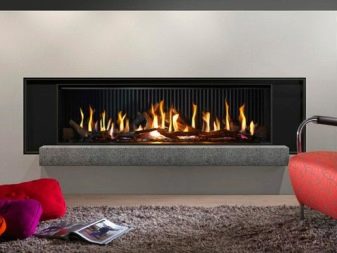
The material of manufacture ranges from traditional brick and natural stone to cast iron and steel. Stone is the best heat accumulator, but it requires a reinforced foundation. Cast iron is slightly inferior to it in terms of heat preservation and does not require the construction of a special foundation. Steel counterparts cool very quickly, but have lightweight structures. The chimney is required only for solid fuel heaters - wood and gas stoves. Other types of fireplaces only need ventilation or aeration, as they have the ability to absorb oxygen from the air.
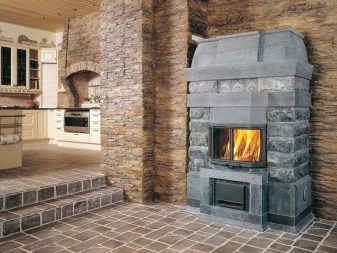

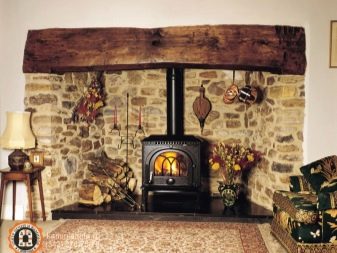

The dimensions of the firebox are very diverse. Large built-in stationary fireplaces are installed in private mansions. For a country house, there are small models that do not require brickwork cladding and can be installed in any convenient place. There are quite miniature interior fireplaces that can be placed in the living room of a city apartment or on a desk.
The main feature of most modifications of fireplaces is the ability to heat only the room in which it is located, with the exception of special structures with air outlets. According to the method of installation, there are walls built into the plane, corner, semicircular or round for heating two or more rooms, wall and island.
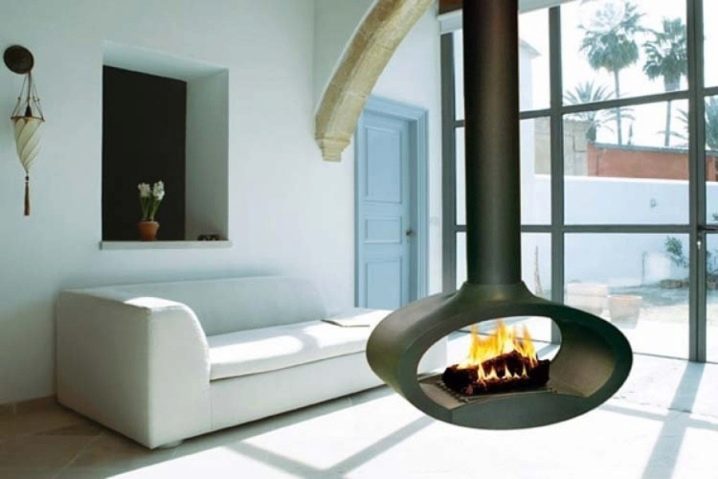
Views
Modern manufacturers offer a wide variety of types of fuel units. They differ in design features and in the way of generating heat. The traditional brick fireplace stove for solid fuel in appearance is the closest to the Russian stove.
Installing a brick fireplace requires a concrete foundation for heavy masonry construction. The chimney is a structural part of the entire building; its construction is envisaged at the initial stage of construction. The firebox can be laid out of refractory bricks, then it is equipped with a transparent door. A built-in metal or cast-iron firebox with a transparent screen is more often used. In brick models, a hob is sometimes located above the firebox for cooking. The supply of firewood is manually regulated, and the brick serves for long-term heat exchange. It can heat adjacent rooms due to the side walls.
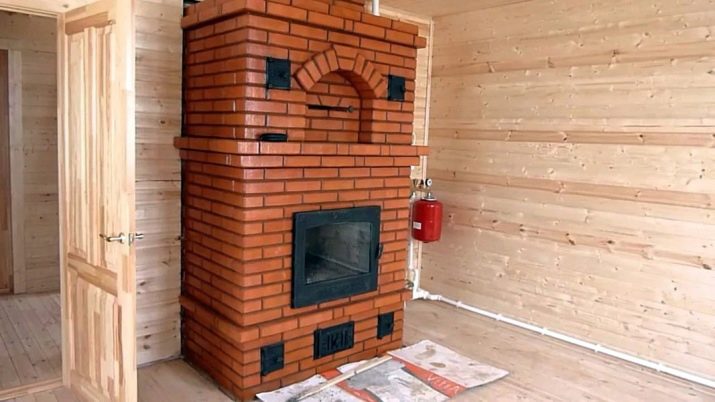
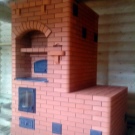
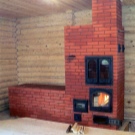
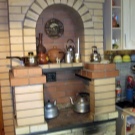
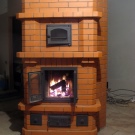
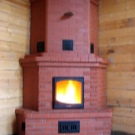
The favorite of the consumer market at this stage are cast iron and steel fireplace stoves, which do not require a special foundation. An insulating plate is included in the package or a porcelain stoneware platform is laid out under the body. The installation of this type of heating device requires only the installation of a chimney. The pipe can be cut into the roof structure at any convenient place, as long as it does not violate the integrity of the load-bearing beams. Depending on the model, they are used only for heating, as a mini-fireplace or additionally equipped with a double frame structure for the built-in hob.
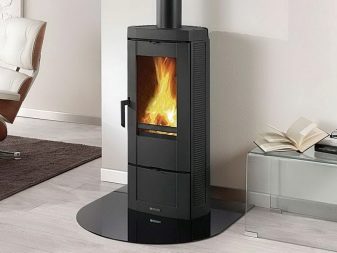

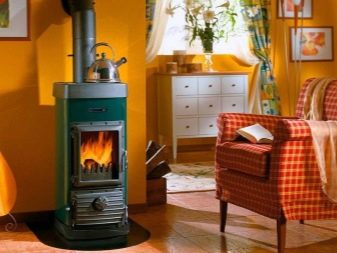
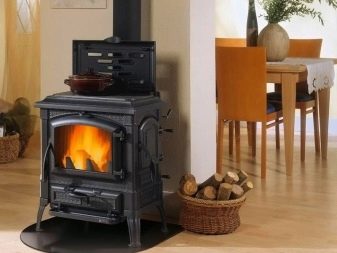
In the new modifications of the furnaces, the manufacturers changed the air duct system and applied the re-supply of fuel residues, which made it possible to increase the duration of the combustion period, reduce fuel consumption and reduce the emission of soot. Such models are called solid fuel long-burning stoves. These units are subdivided into furnaces with air heating of the space and with a water circuit.
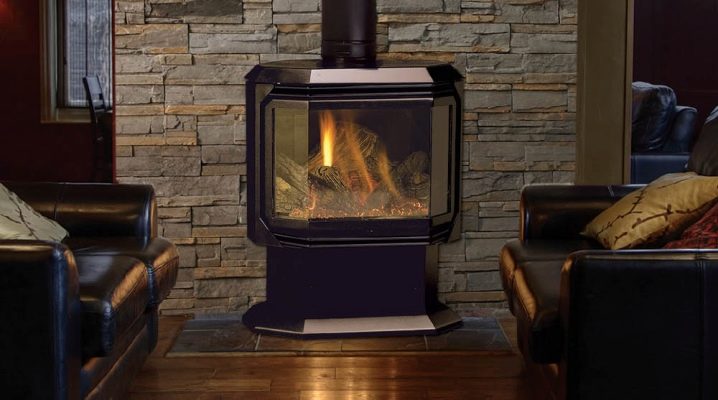
Small iron stoves with an air convective heat exchanger have gained popularity among summer residents. Here, due to the design, air enters gradually and the fuel does not flash, but burns moderately. The special arrangement of several air ducts allows you to efficiently and quickly heat a small room, for example, a small country house with one room. The disadvantage is the rapid cooling when the fire is extinguished. To maintain an acceptable temperature for a long time and distribute heat to several rooms or the second floor, air heat exchangers are installed, hot air is distributed through pipes from the chimney in different directions and gives an additional thermal effect.
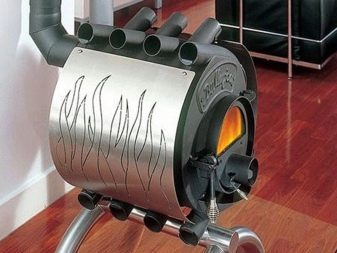
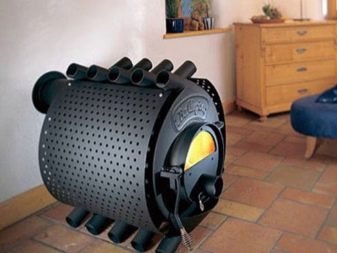
A more ergonomic design is possessed by stoves with a water circuit for heating several rooms or floors. Such stoves are connected to the heating system, the water in the stove boiler heats up and enters the radiators. The economy in fuel consumption makes such a model suitable for long-term use. The heat is constantly kept. The disadvantage is the unevenness of the temperature regime in the heating system. A break in the firebox causes cooling of the radiators and the ambient temperature.
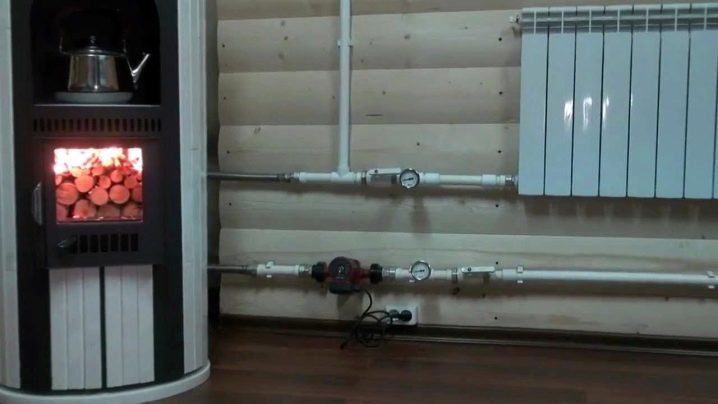
In long-burning ovens, air circulation dryers are provided for drying firewood, since even slow burning of firewood requires a certain degree of moisture in logs, coal or briquettes.
Furnaces are equipped with automatic fuel supply, while one tab can burn up to 7 days in some modifications. Automation on some models regulates several combustion modes.The efficiency of these heating devices is close to 80 percent. Secondary combustion of combustion products reduces the release of harmful substances into the air and the formation of soot, removable ash pans facilitate the cleaning process. At the moment, this is the most popular model for country houses that do not have a gas supply.
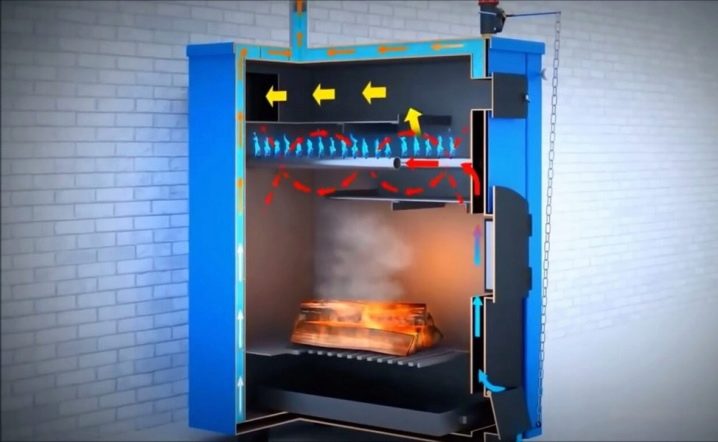
Gas-fired fireplaces are most in demand due to the cheapness of fuel, ease of use, and variety in design. Gas fireplaces-stoves do not produce soot, but still require a chimney to remove the combustion products. The heat transfer of gas stoves is close to wood-burning counterparts. They are used for year-round heating of the house. It has various options for connecting to main gas or to liquefied gas, which expands the scope of gas fireplaces. The lack of real firewood is compensated by a beautiful design of an artificial fire with picturesque tongues of real flame.
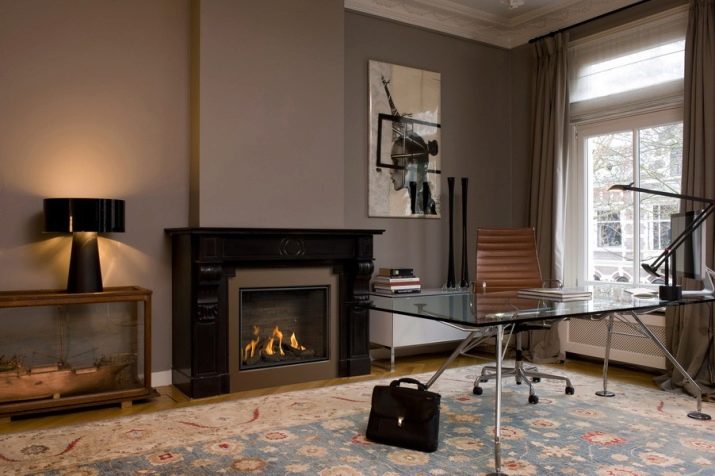
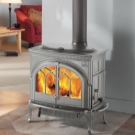
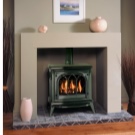


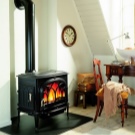
Gas fireplaces have the ability to be controlled using a remote control. Operational safety is supported by special sensors that monitor the combustion mode and automatically turn off the burners in the event of a fuel supply failure.
Electric fireplaces have similar characteristics. In terms of decorative qualities, automation systems for the heating process are not inferior to gas ones. The downside is the costly heating mode. Their efficiency is somewhat lower than that of gas equipment. The body of an electric fireplace can have a thickness of 10 millimeters to a real prototype with imitation of wood. Has heating and lighting modes or only lighting in the form of a flame. Often the screen is endowed with additional functions, for which it is equipped with computer microcircuits. It can change the color scheme and the screen picture, carry an information load.
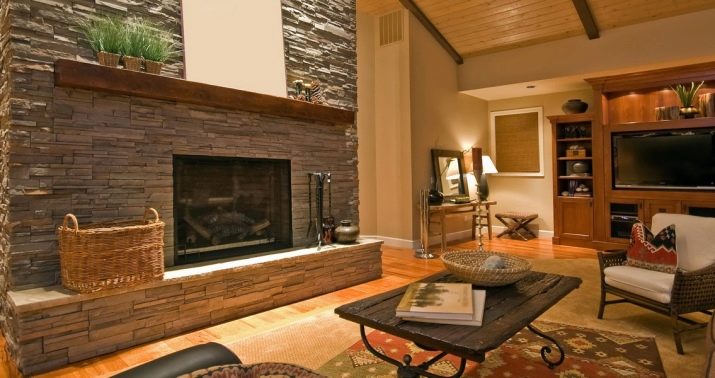
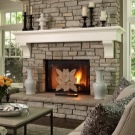
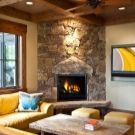

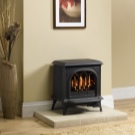
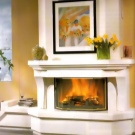
If electric and gas fireplaces require connection to communications, then the latest models of fireplaces with liquid biofuel are completely autonomous. The main structural element is a fuel tank consisting of two compartments for combustion and fuel filling, with openings for fluid supply to the burner made of artificial stone or metal. The fire in the fireplace is natural, it burns evenly, there is no soot and sparks, it does not require a chimney and a foundation, it can be installed on any surface.
The fuel for them is alcohol ethanol. The consumption depends on the volume of the room and the required heating temperature. Tabletop models burn about 200 milliliters of fuel per hour, large wall-mounted models with a long burner burn 500 milliliters per hour. The brightness of the flame is regulated by the burner slide. Provides moderate warmth. However, this fireplace is more of a decorative replacement for a real stove fire in a city apartment.
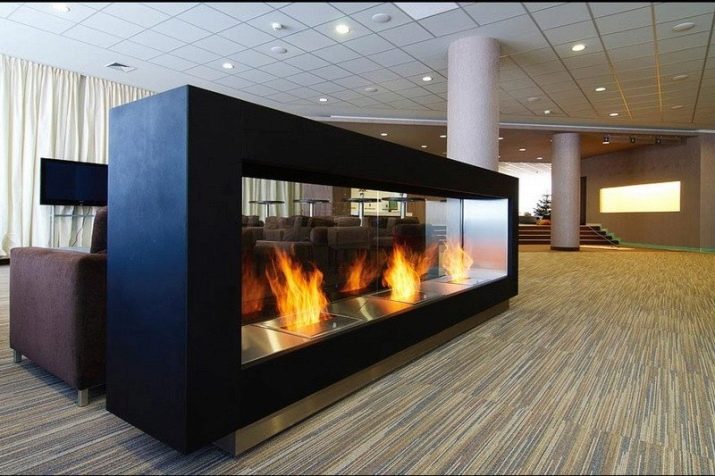
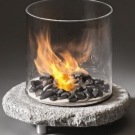
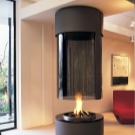
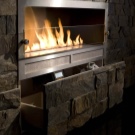
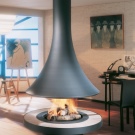

Design
Fireplaces have become part of our life; they serve both for heating and for decorating the interior. For many years, classic fireplaces with a rectangular portal made of MDF, plastic or plasterboard decorated with stucco have been unchanged; they have occupied a solid niche in city apartments and country cottages. The living room, decorated in a classical style, is decorated with a fireplace-stove inserted into the portal, trimmed with marble. Natural or artificial stone for finishing the portal is selected to match the decor. Such a fireplace gives weight and solidity to the living room.
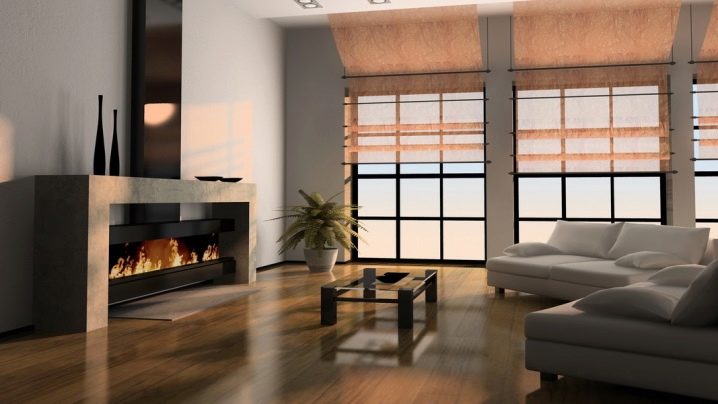
Tiles and tiles are traditional materials for decorating stoves and fireplaces. This decoration has a long history, today it is again at the height of fashion. A large selection of tiled ceramics makes the fireplace unique. The unified forms of the metal body of the fireplace acquire exclusive features, while this material has functionality.
Tile is a good insulating material, it protects closely spaced interior items or wooden partitions from fire.Ceramic allows you to keep the heat of the hearth longer, is durable, easy to clean, does not fade or fade. The simplest geometrical forms, covered with tiles with glazed tiles, acquire exquisite outlines and noble antiquity values. The tiled fireplace becomes the focal point in a contemporary design room.
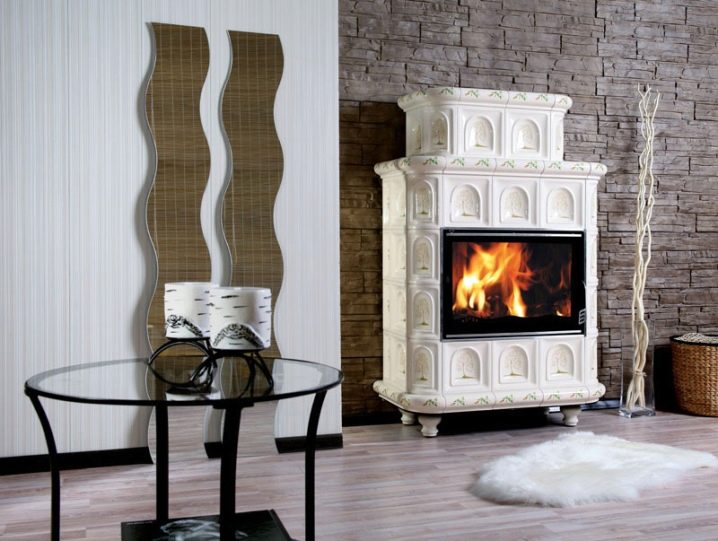
The Art Nouveau interior will be complemented by a portal with floral ornaments and smooth lines of the frame. Metal details are an indispensable attribute of this sophisticated design trend. Interiors of this direction require strict subordination of the entire furnishings to one style. Discreet colors and mesmerizing continuous curves and shapes turn the heater into a work of art. The floral pattern pacifies the riot of fire and brings notes of calm, relaxation and bliss.
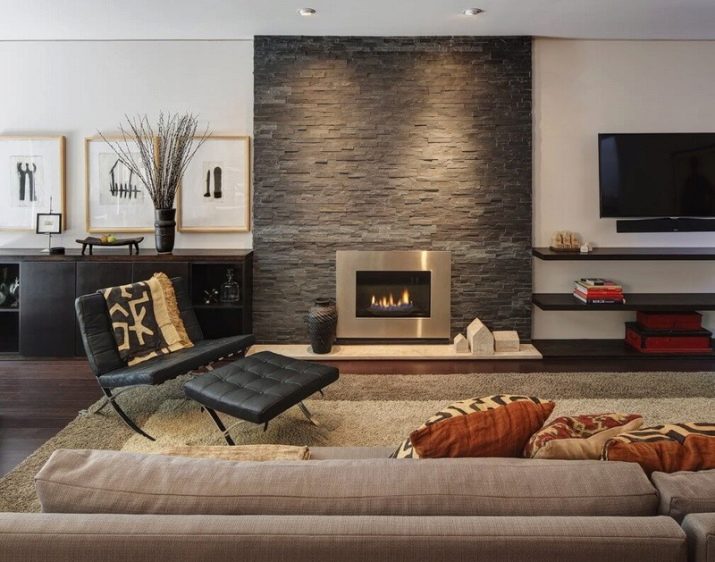


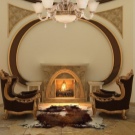
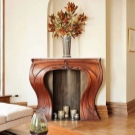
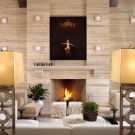
Hi-tech maintains the simplicity and sleekness of the metal design of the fireplace facade. Finish colors - gray, steel, black, white. The fireplaces in these high-tech interiors have two doors on both sides to maximize the beauty of the flame. The fireplace stove is used as a divider into functional zones to transform the space. Futuristic features radically change the concept of stove heating, turning it into a space component of the interior.
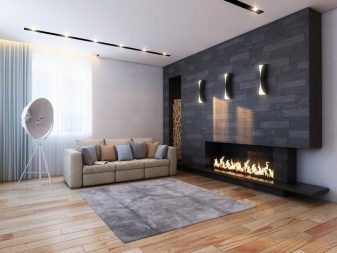

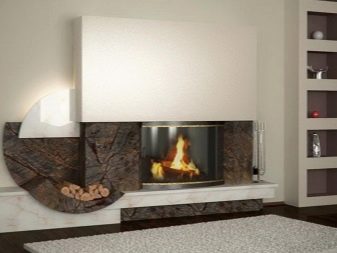
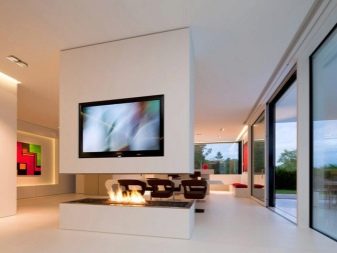
Fireplace stoves in Provence interiors are finished with natural stone or cobblestone. The brutal finish lends weight to the entire structure. Stone floors and smoked beams are the hallmarks of the French halls. The interior is balanced by light, sun-bleached furniture and light wallpaper with a small floral pattern. The stone keeps cool in summer, in autumn and winter it keeps warm for a long time, allowing you to comfortably spend time by the fireplace.
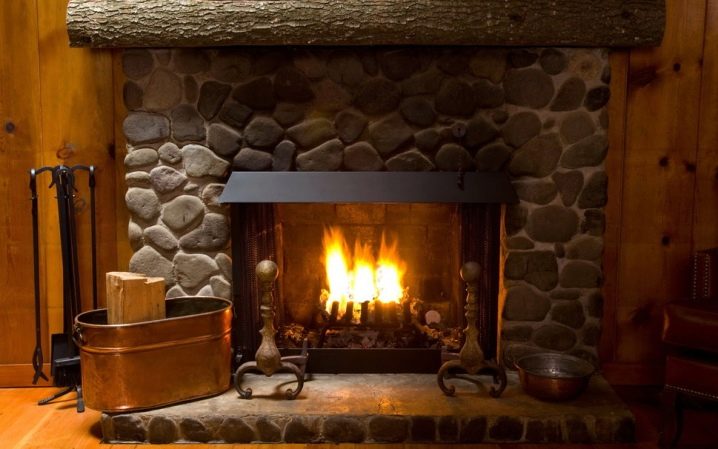
In the Scandinavian style, heaviness is modeled into solidity and good quality. Plain white plaster with heavy wood consoles and a mantel is combined with the structural elements of the ceiling and wall beams. The firebox is selected capacious. The hearth fireplace fits seamlessly into a simple environment with comfortable sofas and armchairs. A neat woodpile completes the overall picture.
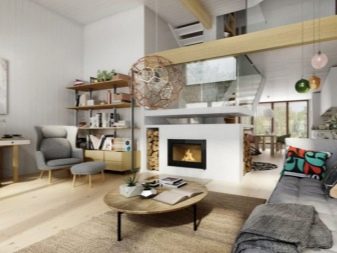
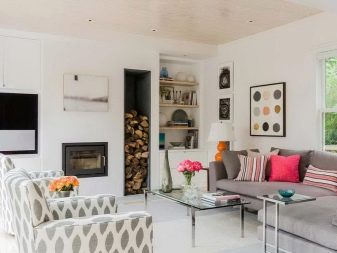
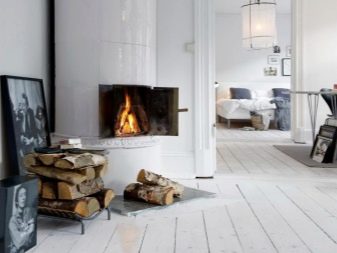
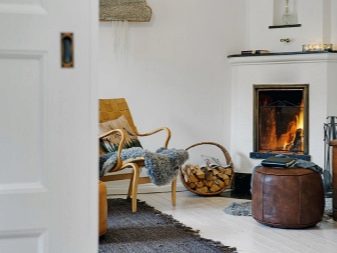
Minimalism simplifies the decorative element, leaving only functional elements. The fireplace stove has an original shape and is located in the middle of the house. Several tasks are solved at once using one object. The space is divided into zones, the entire area of the room is heated, the fireplace is visible from all points of the room. The rest of the furnishings have neutral tones of the background, bringing the fireplace to the center of the composition.
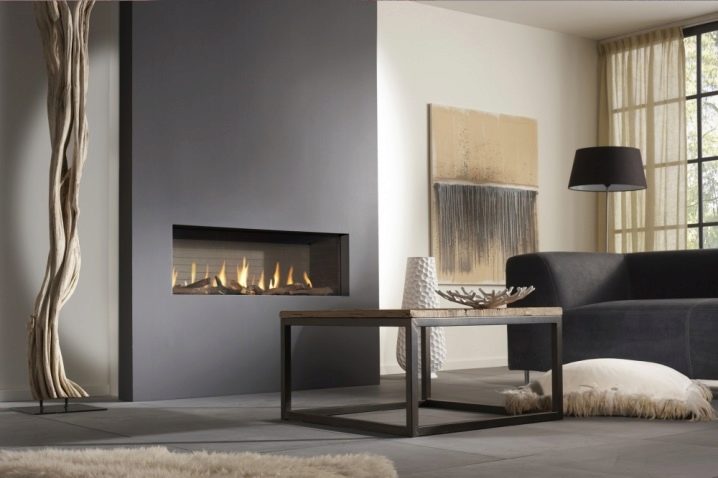
The rustic or rustic style of the log buildings, with a lot of wood trimmings, is reminiscent of a Russian chalk-whitewashed stove. The fireplace portal together with the chimney is stylized as a stove. This is done using a massive white body. The body can be made of brick or drywall, then plastered and painted with acrylic paint. Light wood and white color scheme of interior details add light and coziness to the room, which one would like to call a "room".
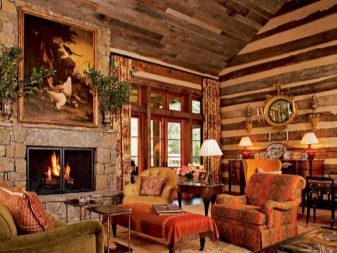
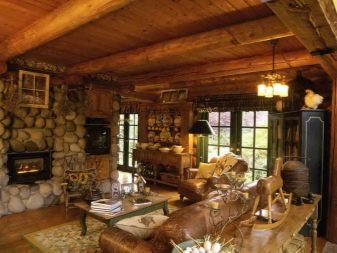
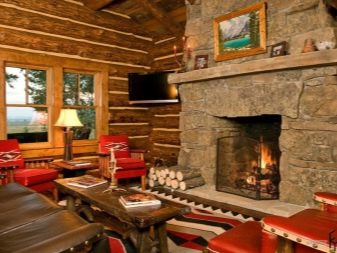
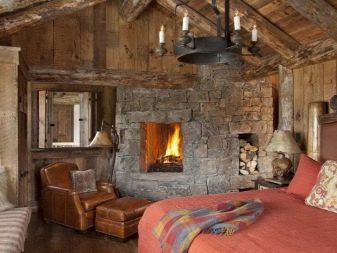
Loft-style fireplaces have the most original and technological form. External finishing can be done even from a piece of old pipe with a large diameter. Iron with a touch of rust and a layer of soot is an artistic element of industrial design. The chimney is not hidden behind the ceiling, but is deliberately exhibited as a decorative detail. Super modern fireplace equipment is built into a piece of industrial waste.
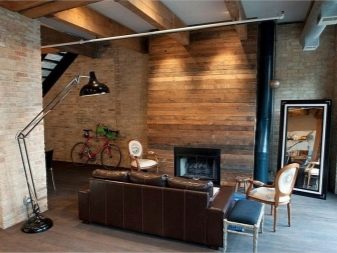
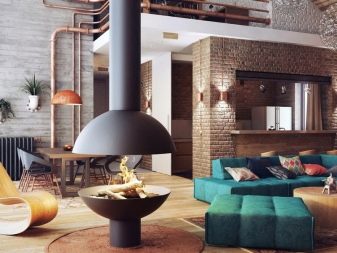
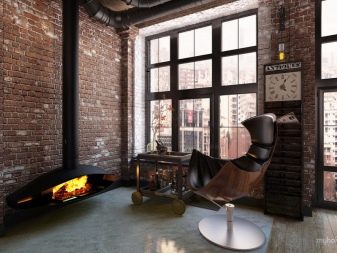

When choosing the shape of the fireplace and its decoration, it is important to take into account the general style of the design of the room. The location of the fireplace is also of great importance. It is best to install it on the main wall of the living room, so that other pieces of furniture do not obstruct the play of flames. It is worth borrowing the experience of the English aristocrats, who had a couple of armchairs next to the fireplace for better heating and relaxation.The central part of the room is allocated for a fireplace in the presence of a large area, since in a small room the structure can clutter up the space and the essence of the view of the fire will be lost due to cramped conditions.
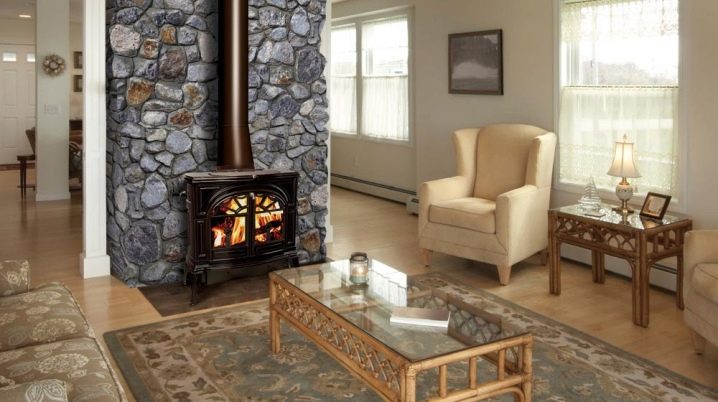
Which one to choose?
Having decided on the style, it remains to choose the desired design and type of fuel. What is there to be guided by? The first step is to determine the conditions of use: year-round heating for a residential home or seasonal irregular use in cold weather. If you come to the dacha only in the summer and sometimes in the autumn-winter period for a couple of days, then there is no point in equipping the house with a system of radiators, for the winter the water will have to be drained in order to avoid pipe rupture at negative temperatures. The best way out is to install a long-burning convection oven and equip the chimney with a system of air heat exchangers.

Solid fuel stoves are suitable for permanent residence long burning with a water circuit. It is a practical and easy-to-use design. The installed automatic firewood supply sensor will allow for a long time to operate the water heating system for supplying to radiators without human intervention. To establish the optimum coolant temperature, it is enough to adjust the combustion mode sensors. This option is acceptable if a sufficient amount of solid fuel is available: firewood, coal, pellets.
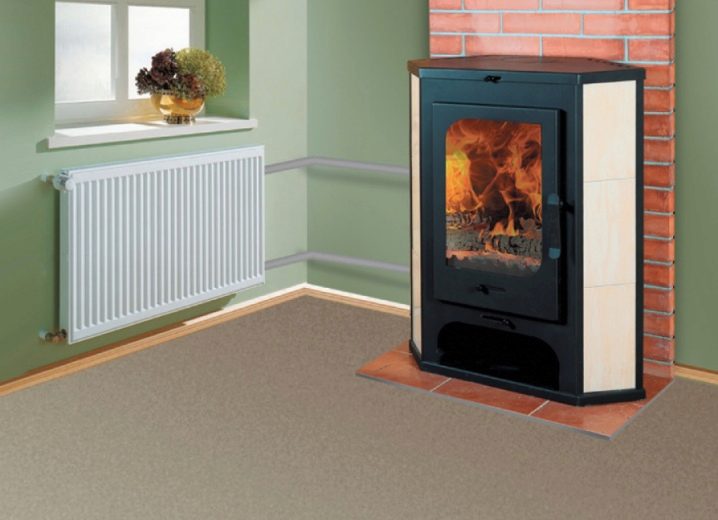
Connecting the house to gas utilities makes a similar design of a gas-powered fireplace preferable. Gas is a cheap type of fuel, unlike wood and coal energy sources, it does not require regular filling. The temperature regime in the house can be adjusted with a gas burner knob. There is no need to store firewood or coal. The presence of an optimal energy source is the second component of choosing a heating device.
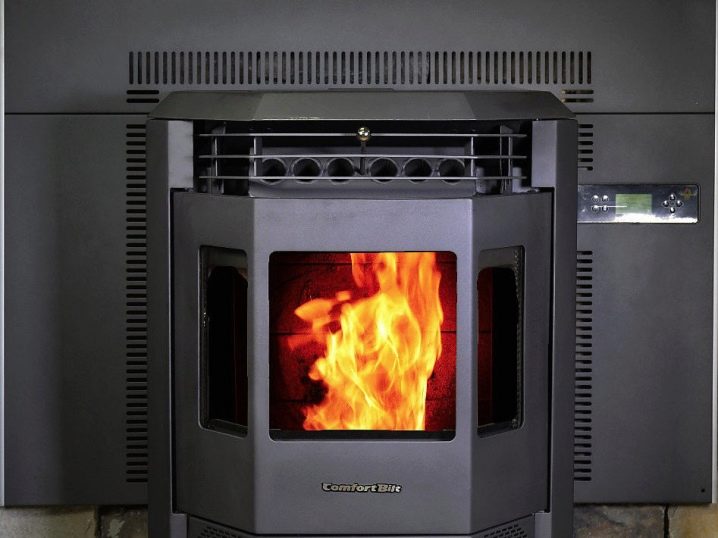
The next criterion is the size of the heated area. Each fireplace model is supplied with a list of technical characteristics, the main indicator of which is power. The standard heating power is calculated as 1 kW per 10 sq. meters of area without partitions and no number of storeys. It remains to calculate the entire area of the room and select a suitable unit.
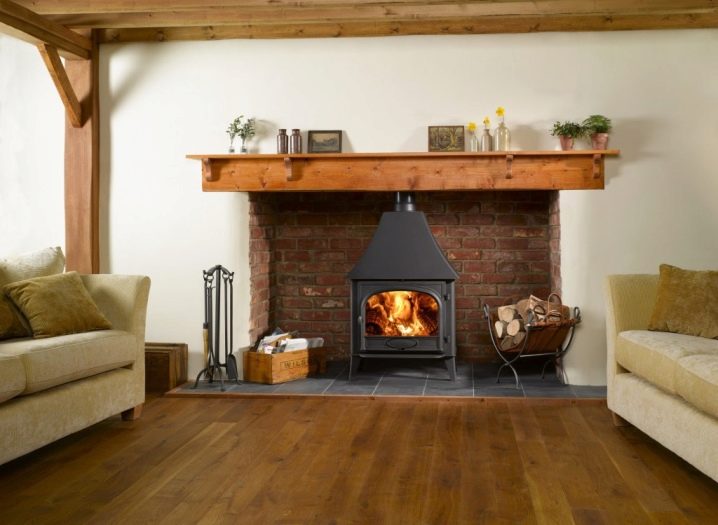
Another criterion influencing the choice of model is the weight of the stove. It can vary from 50 to 800 kg. Steel housings are lighter, but they cool faster. You need to know the constructive capabilities of the floor, and the place where you plan to install the fireplace. Reinforcement of structures or the construction of a support podium may be required. The scheme for installing the chimney is studied in advance to create sufficient traction, otherwise the combustion will not correspond to the declared parameters.

Finally, there are stationary fireplaces and mobile ones. Mobile ones are similar in appearance to potbelly stoves. Their difference is in the glass door and there are two options for connecting the chimney: built-in - on top, and the second - on the back wall. They provide rapid heating of the room due to the heat transfer of the unit itself.
How to do it yourself?
The installation of a fireplace is envisaged at the design stage of a residential building, the project is developed by construction and design workshops with the provision of design drawings and a sketch of a decorative interior solution. The same firms undertake all construction and equipment connection work. This complex of works has a fairly high cost, so most owners of small houses prefer to do this work on their own.
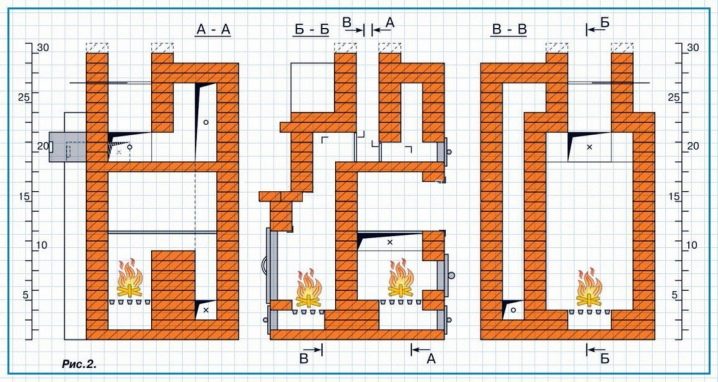
Before proceeding with the self-installation of the fireplace, you need to familiarize yourself with the requirements for safe operation of the heater. City apartments in multi-storey buildings are not the most suitable place for a long-burning solid fuel stove-fireplace.You will have to go through a huge number of approvals with various services to bring the chimney to the roof. If a block of flats does not have stove heating, neighbors may be an obstacle to this plan. Building a chimney will be very costly. Therefore, we will consider the most common options for arranging in country houses.
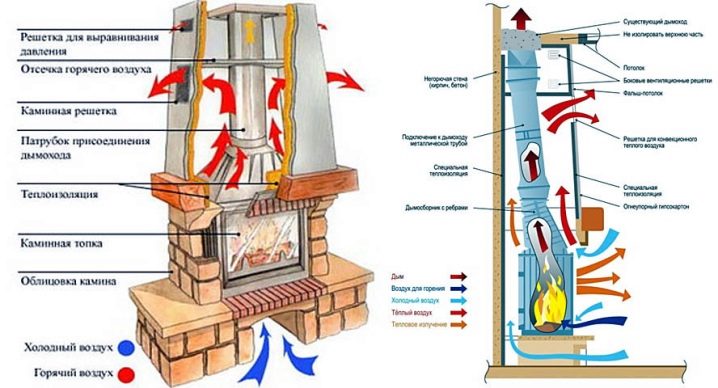
The traditional construction is made of bricks, followed by the installation of a steel or cast iron unit. The weight of this structure requires the construction of a foundation to a depth of 80 centimeters.
The depth of the firebox must be at least half of the height. The stone fireplace can be equipped with a panel for heating and cooking food or have a separate chamber. Refractory bricks are used for brickwork. The process of its construction requires certain skills. In the absence of experience, it is better to trust a professional or perform a tile or drywall cladding. The cost of the services of bricklayers is high, so many have to build a fireplace with their own hands. Let's look at the step-by-step instructions for this action.
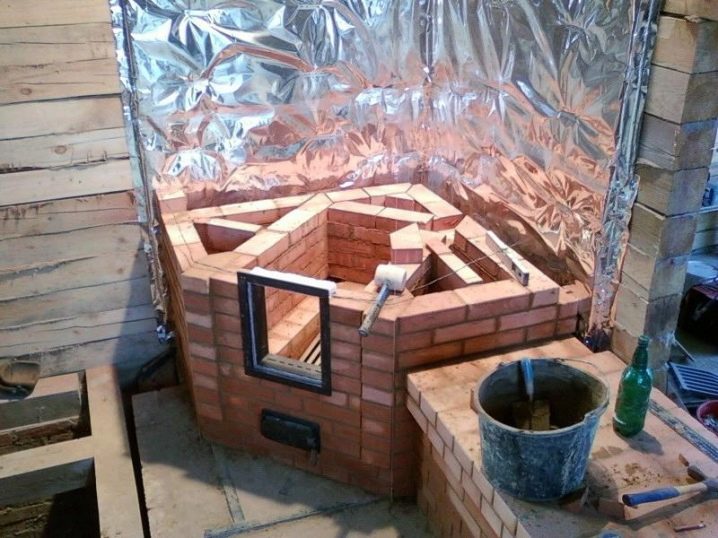
The volume of the room is calculated. The size of the firebox should relate to the volume of the room as 1 to 70. The shape and design of the fireplace with a chimney is selected. Ordering diagrams are drawn, where the layout of the bricks of each row is schematically shown separately. Ordering schemes for their sizes can be ordered from a construction workshop, or you can use ready-made options to save money.
The next stage is the construction of the foundation. A pit is being dug, 60-70 centimeters deep, 15 centimeters wider than the base of the fireplace. A layer of crushed stone with a height of 10-15 centimeters is lined at the bottom, the formwork is installed and layer by layer the stone is poured with liquid cement slightly below the floor level (5-6 centimeters).
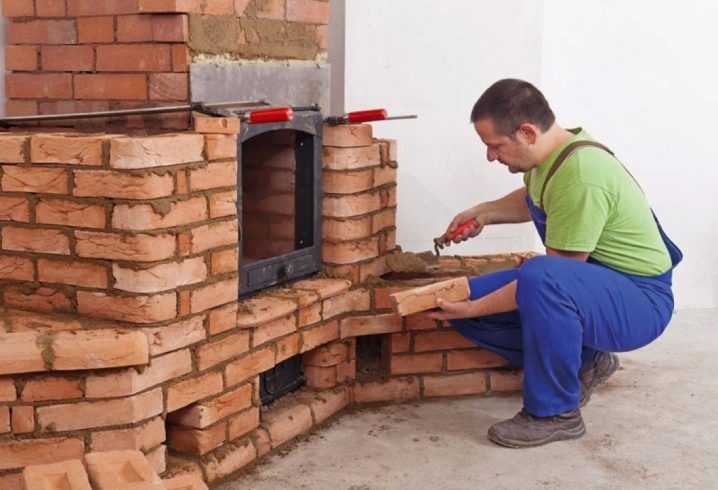
After the foundation has dried, proceed to the brickwork. The back wall is laid out in half a brick, the side walls in brick. The back wall of the firebox from the middle should have a forward tilt of 15-20 degrees for hot air circulation. This slope is provided by stepped masonry protrusions. After the completion of the construction of the fireplace body, the chimney is mounted. All these types of work require some experience. Beginners will spend a lot of time and they will inevitably have problems with the accuracy of laying bricks at the initial stage.
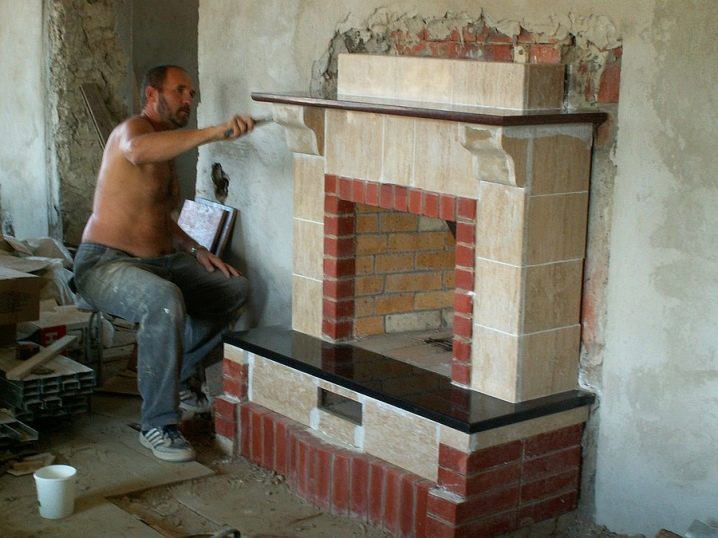
Manufacturers offer a large selection of ready-made designs for decorating ovens. Painting metal facades with special paint has proven itself well. Painted stoves have a beautiful decorative appearance and do not require additional finishing materials. They just need to be installed in the right place and connected to the heating system and chimney. The color of the color scheme is matched to a specific interior.
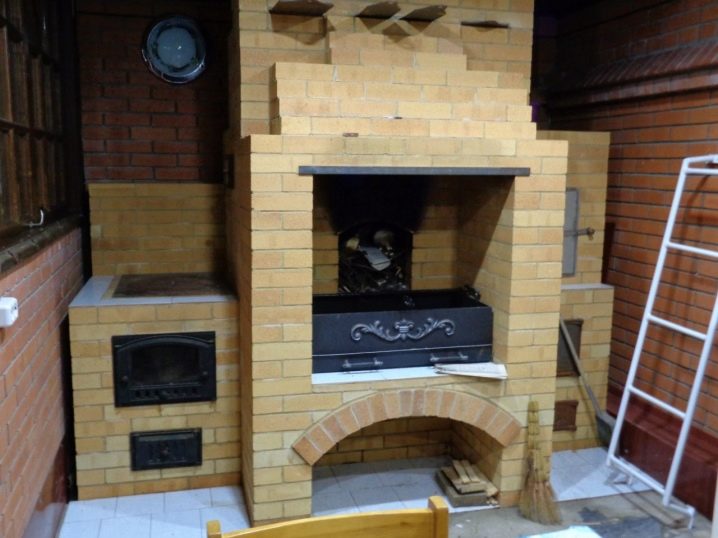
The place of installation of the fireplace stove assumes the absence of drafts that will impede traction. This means that the unit must not be located in a line between a window and a door. The fireplace should be located as close to the outlet pipe as possible. If smoke channels are provided in the construction of the walls, the chimney is led out into them. With self-installation, the chimney is taken out through the ceiling and the roof to the outside, while the chimney pipe is wrapped with mineral wool and a shaft made of foam blocks or bricks is erected around it.
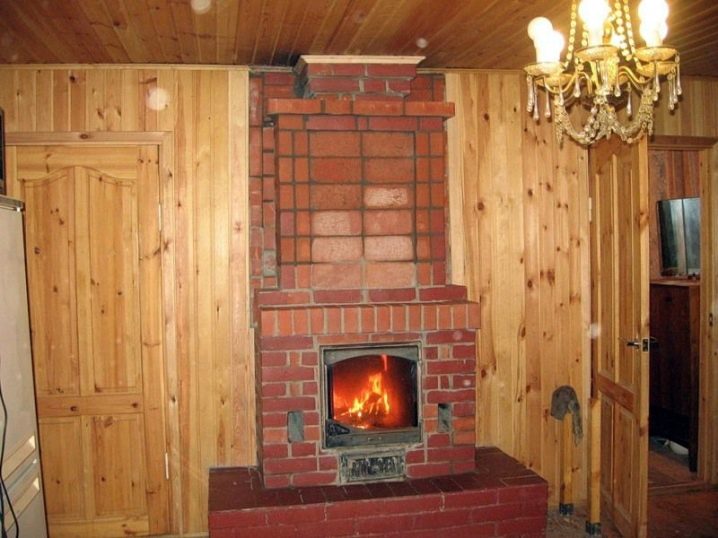
The chimney pipe is made of bricks, metal, asbestos, ceramics. The diameter of the chimney is selected from a ratio of 1 to 10 of the size of the firebox. The round shape of the pipe is considered optimal. Manufacturers offer for self-assembly inexpensive and lightweight "sandwich" chimneys made of stainless steel - two pipes of different diameters, the space between which is filled with mineral insulating wool. It is a ready-to-install structural element that does not require additional insulating structures. The chimney is equipped with a gate - a damper that blocks the air flow. With the help of a gate, traction is regulated.
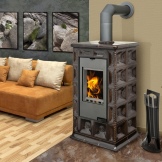

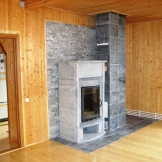
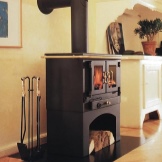
The area in front of the fireplace and under it is faced with porcelain stoneware.Models with support pillars have air inlet from below, when installing the furnace in a monolithic base, a channel is laid in it for air flow through the floor slab from the street. To do this, a supply pipe is built into the ceiling, which goes under the bottom of the furnace to the grate.
Tips & Tricks
The service life and heat dissipation of the heating unit depends on the operating conditions. The best reviews were given to solid fuel fireplaces with long burning. Regardless of the type of unit, fireplaces must be installed in accordance with fire safety requirements. They should not come into contact with furniture and wooden partitions. Stoves must be regularly cleaned of soot, do not allow moisture to enter, monitor the temperature regime in order to avoid cracking the body from both overheating and hypothermia.
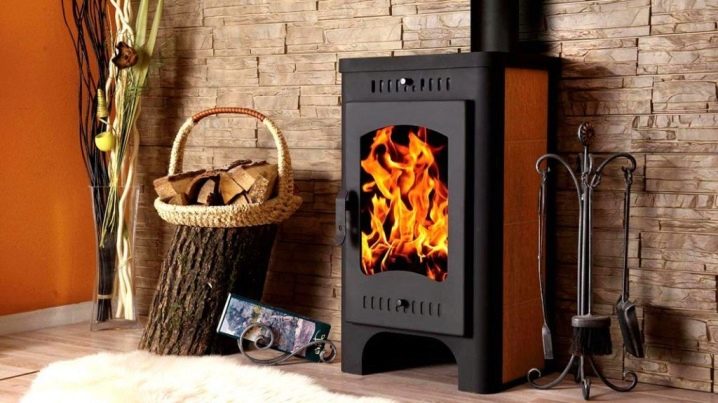
Only use dry kindling material. Firewood for an active hot fire is used small, of the same size. The larger the logs, the slower the combustion process. The stove must not be heated with waste wood-based panels with harmful synthetic impurities. For heating, birch, oak, maple or larch logs are better suited. Pine gives off too much tar when it burns. This will lead to the need for frequent cleaning of the chimney. The logs should be a quarter shorter than the combustion tank, and in no case should they rest against the glass screen.

In families with children, they should not be left unattended next to a working stove. The fireplace should not interfere with movement around the room. In the absence of traction, the kindling of firewood is stopped until the cause is eliminated. Poor draft can be caused by the ingress of a foreign object into the chimney pipe. Do not completely close the gate damper during active combustion, this can cause carbon monoxide poisoning.
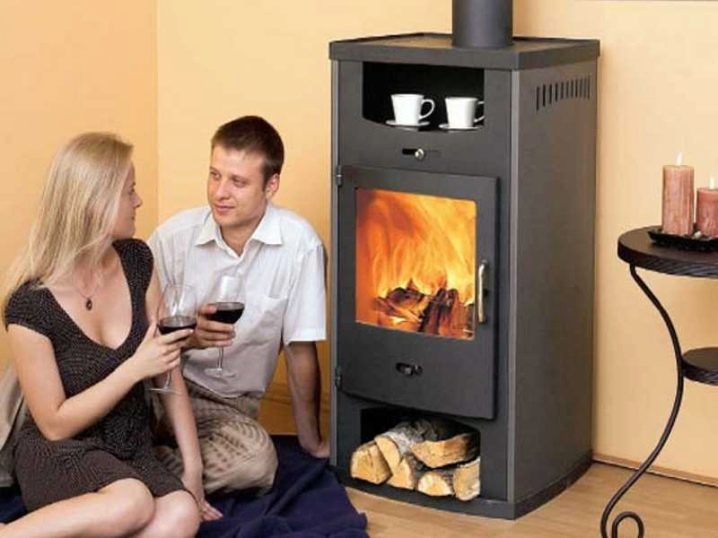
The chimney needs to be cleaned from combustion products from time to time, at least 2 times a year with regular use, or to invite a specialist. For cleaning, special devices are used - a ball on a chain, which is lowered into the pipe from above. Soot is poured into the firebox if there is no special sliding pocket. It is better to provide such a pocket at the installation stage.
Manufacturers and reviews
The great demand for indoor fireplaces has determined a wide range of fireplaces from domestic and foreign manufacturers. Various modifications of fireplaces of excellent quality in the domestic market are presented by companies "Meta" and "Teplodar".
The stoves of these manufacturers are distinguished by modern design, good performance and optimal functional content. Long burning fireplace stove "Meta Selenga" takes the first place in the ranking in terms of the produced power of 8 kW, is equipped with an oven and a compartment for drying firewood.

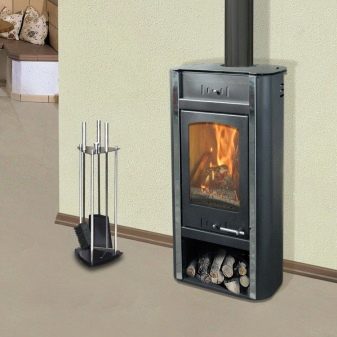
Convection ovens ОВ-120, "Tango Trio" production of the company "Teplodar" have a uniform heat transfer, quickly and efficiently heat the room. They are a good option for seasonal use in the country.

Scandinavian countries with harsh winters have accumulated extensive experience in the production of environmentally friendly and ergonomic fuel units. Finnish fireplaces Harvia and Tulikivi are in constant demand. Their products are made of cast iron and steel, coated with heat-resistant paint. During operation, the body of the stove and the outer coating do not deform or crack.
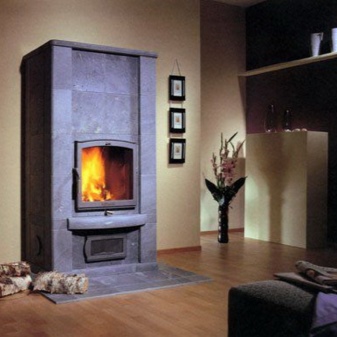
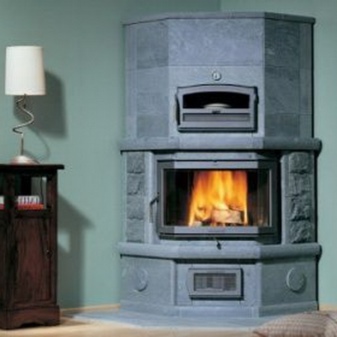
Stoves are leaders in functionality and high decorative qualities. Bayern Munich... A variety of models are presented from small mobile fireplaces, which can be easily transported in the trunk of a car and heated on a hike, to beautiful stationary fireplaces with a three-sided glass screen. It allows you to observe the burning flame from all points of the room. The external design of the stoves of this manufacturer is not inferior to the performance indicators. Some models can provide warmth up to 110 sq. meters.
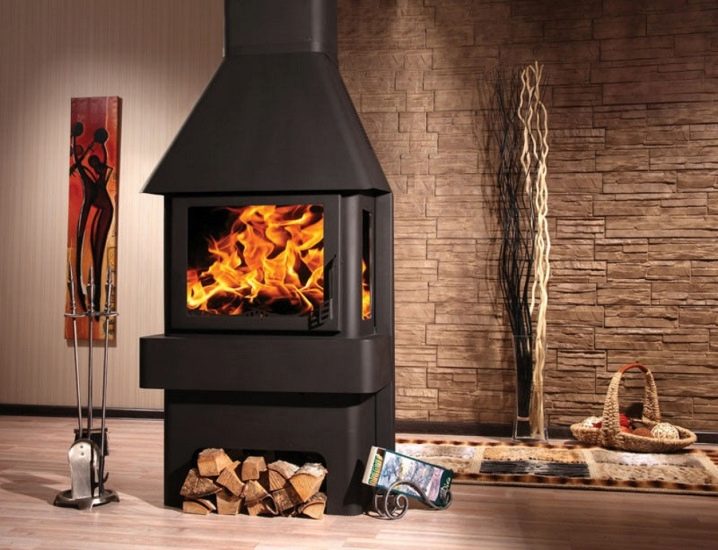
In the design of furnaces Bayern Munich a combination of cast iron, steel and fireclay bricks is used. The use of the latter allows you to reduce heat loss and puts these stoves in first place in terms of economical fuel consumption. Built-in ovens and a hob allow you to comfortably prepare meals for your family and keep you warm for a long time.
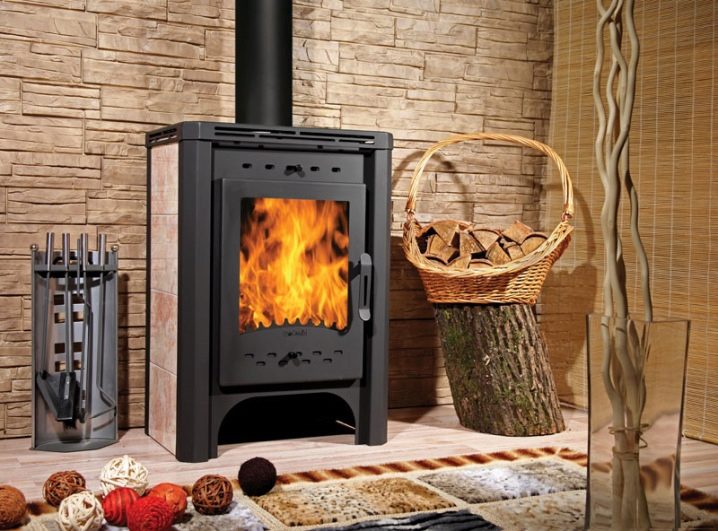
For a country house, a good solution would be to purchase an Optima stove - a compact and efficient model provides fast heating of a small space and has a stove on the top panel.
Jotul ovens production in Norway has a wide range of prices, heating power and design of finishes. It is worth considering the ease of installation, additional options in the form of a hob or pull-out ash pan. Powerful fireplaces with luxurious finishes from foreign manufacturers at a price can significantly differ from an inexpensive, but functional and light stove for a small country house. Evenings by the fireplace with the whole family will be the best moments of relaxation.

Beautiful examples in the interior
Classic fireplace made of natural stone.
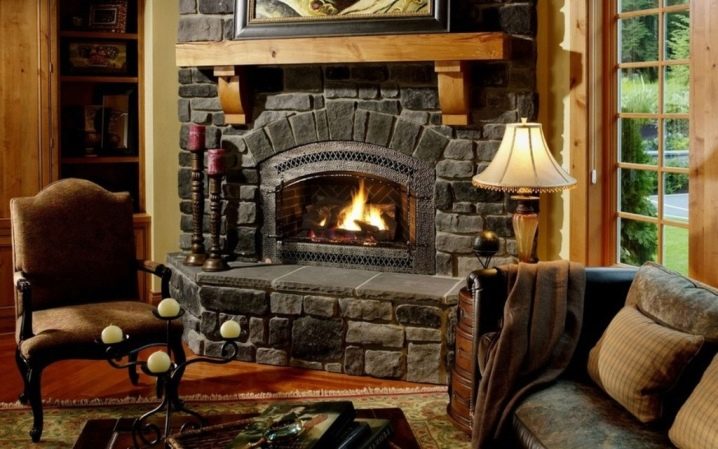
The tiles in the fireplace finish add a touch of elegance to the modern interior.
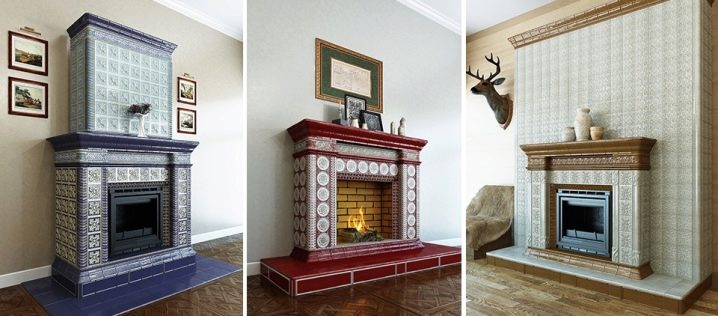
The original design of a stylish corner fireplace in high-tech style.

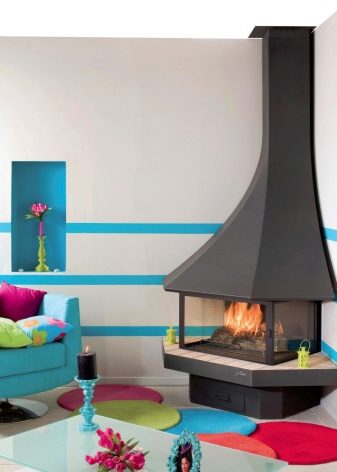
Mediterranean style interior with fireplace.
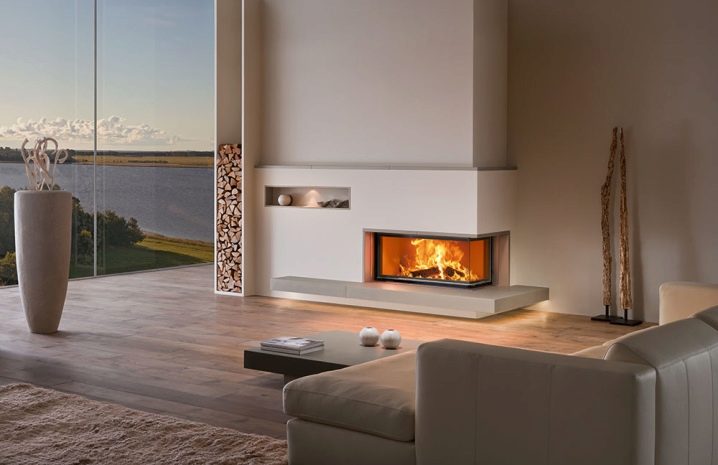
For an overview of stoves and fireplaces in a country house, see the following video.













The comment was sent successfully.